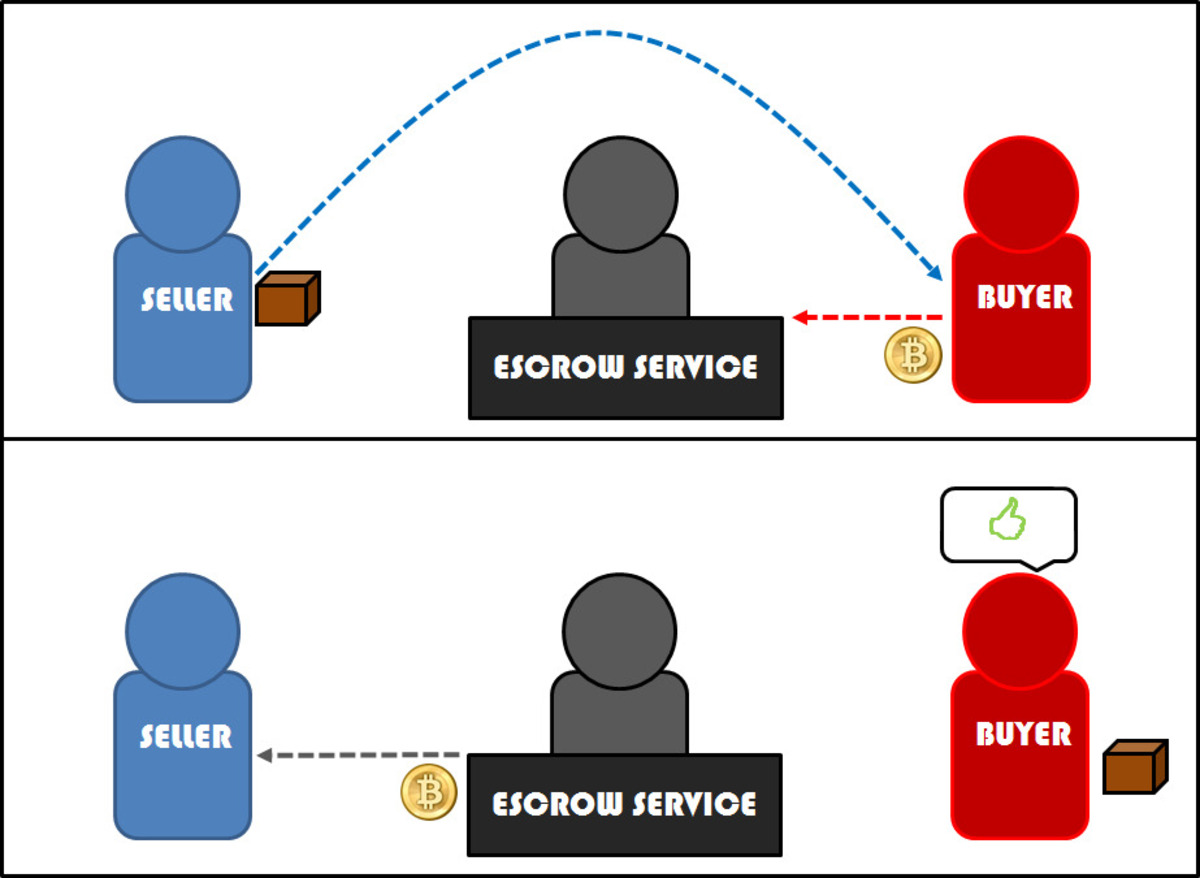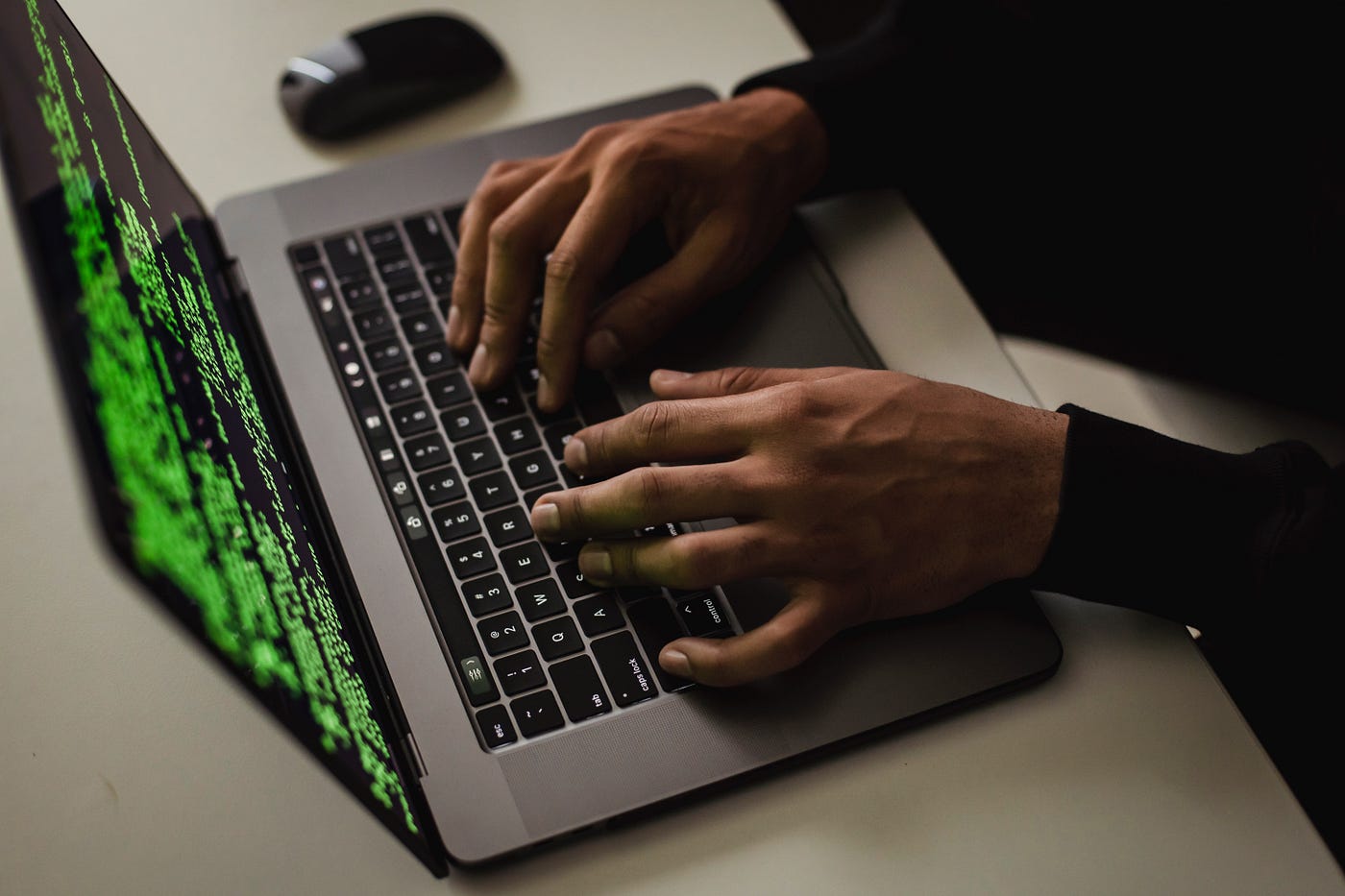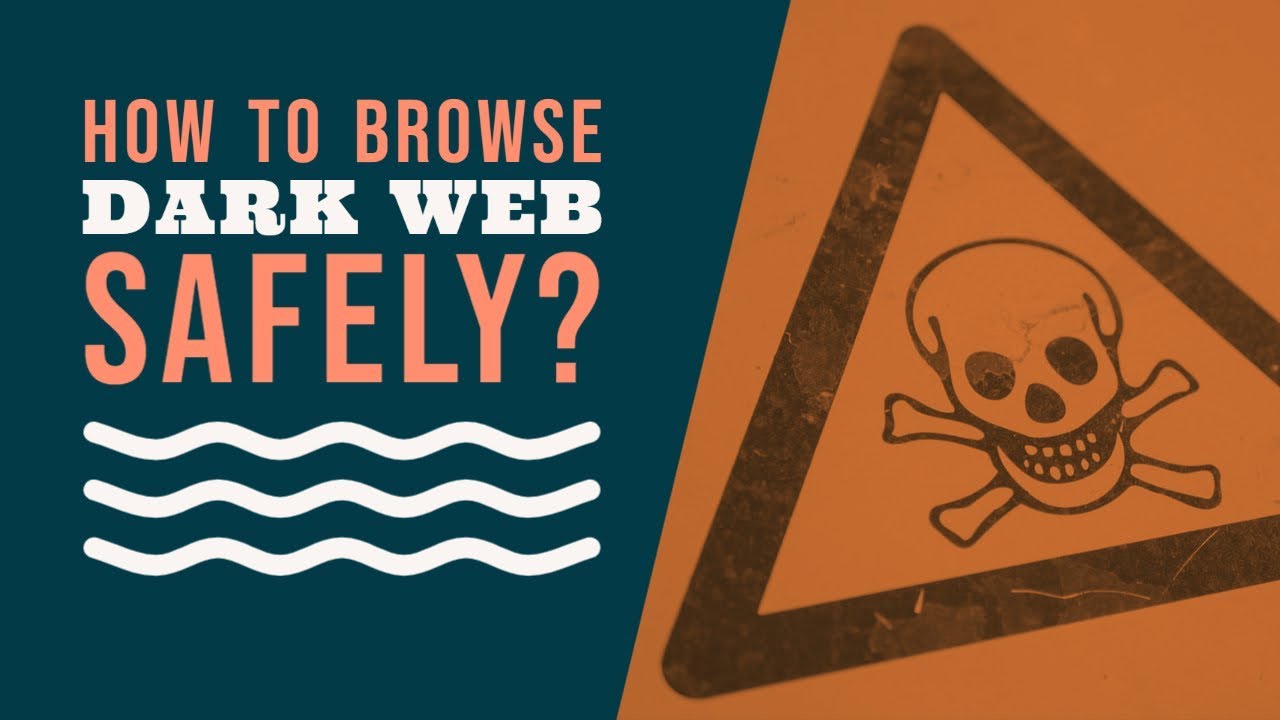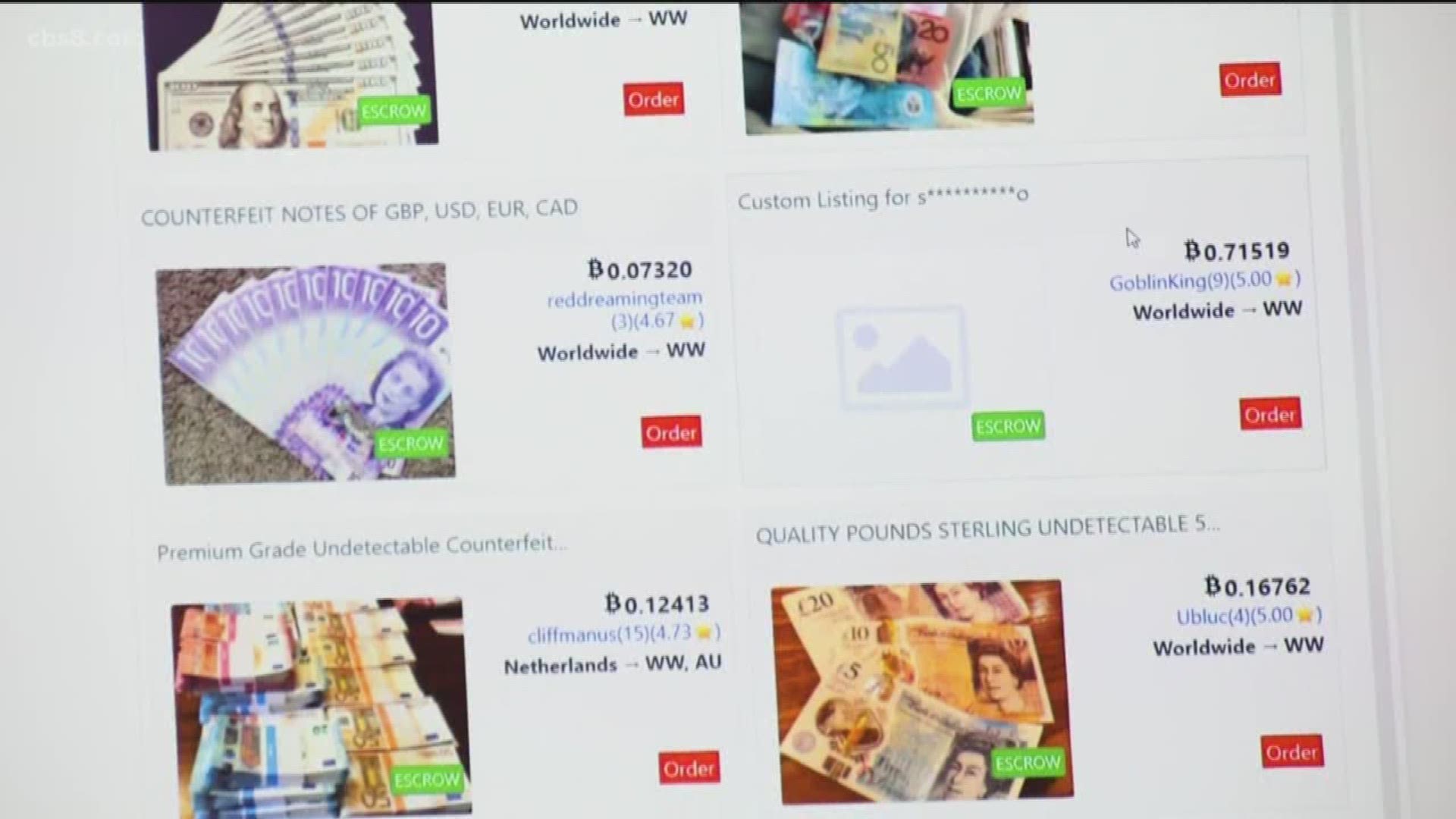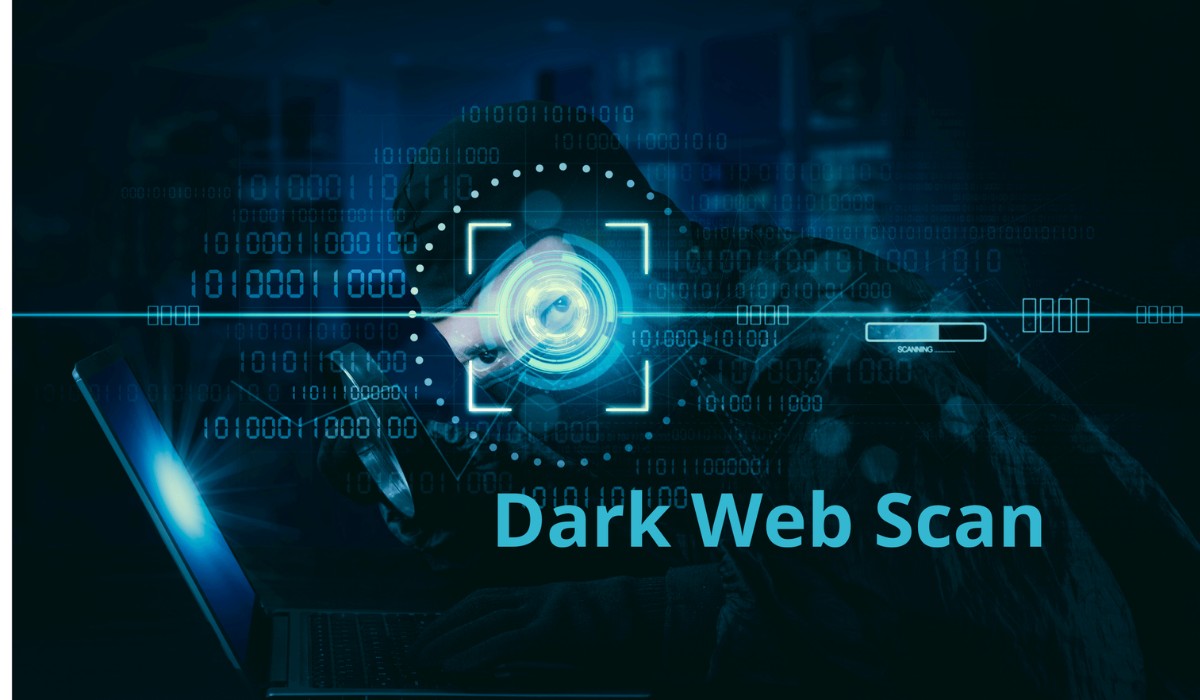What is Escrow?
Escrow is a widely used term in financial transactions to describe a process in which a neutral third party holds funds or assets on behalf of the buyer and seller. This ensures that both parties fulfill their obligations and protects them from potential fraud or misconduct. Escrow is particularly important in high-risk environments, such as the Dark Web, where anonymity is vital and trust is scarce.
When utilizing escrow, the buyer sends payment to the escrow service, which holds the funds until the buyer confirms satisfaction with the goods or services received. Once the buyer gives the green light, the escrow service releases the funds to the seller. This system provides a reliable and secure way to facilitate transactions, mitigating the risk of scams or disputes.
Escrow acts as a form of mediation, providing reassurance to both parties involved. It protects the buyer by ensuring that the seller delivers the promised goods or services as described. At the same time, it safeguards the seller by guaranteeing payment upon successful completion of the transaction.
By using an escrow service, both buyers and sellers can have peace of mind, knowing that their transaction is secured in a neutral and trustworthy environment. This eliminates the need for blind trust and reduces the likelihood of falling victim to fraudulent schemes on the Dark Web.
Escrow services on the Dark Web play a pivotal role in minimizing risk in an inherently risky marketplace. With the increasing number of online scams and cybercrimes, escrow services offer a layer of protection and create a sense of trust between buyers and sellers who are operating in an anonymous and unregulated environment.
Now that you understand the importance of escrow, let’s explore why this process is particularly crucial on the Dark Web.
Why Use Escrow on the Dark Web?
The Dark Web is a vast and anonymous online marketplace where illicit activities and transactions take place. Operating in this hidden realm comes with inherent risks, including scams, counterfeit goods, and unreliable sellers. This is where escrow services prove invaluable, providing a secure platform for buyers and sellers to conduct transactions with a reduced risk of fraud or deception.
One of the main reasons to use escrow on the Dark Web is to ensure that sellers deliver what they promise. With no way to verify the legitimacy of the sellers or the quality of the goods being sold, buyers are at a greater risk of being scammed. By utilizing an escrow service, buyers can withhold payment until they have received and confirmed the satisfactory delivery of the products or services.
Escrow also protects buyers by offering a dispute resolution mechanism. In the event of a problem or disagreement, such as receiving counterfeit goods or not receiving anything at all, the escrow service can intervene and help resolve the issue. This provides buyers with additional confidence when making purchases, knowing that there is a mechanism in place to address any potential problems.
Sellers also benefit from using escrow on the Dark Web. It helps establish credibility and trust among potential buyers who may be hesitant to engage in transactions due to the lack of transparency and accountability. By leveraging an escrow service, sellers can demonstrate their commitment to fulfilling their obligations and safeguarding buyer interests, thereby attracting more customers and improving their reputation within the Dark Web marketplace.
Furthermore, escrow adds an extra layer of security by acting as an intermediary between buyers and sellers. The escrow service holds the funds, eliminating the need for direct financial transactions between parties. This reduces the risk of sensitive financial information falling into the wrong hands and reduces the potential for identity theft or fraudulent activity.
In summary, using escrow on the Dark Web provides both buyers and sellers with a level of trust and security in an environment fraught with risks. It ensures that transactions are conducted in a safe and transparent manner, minimizes the likelihood of falling victim to scams or fraudulent activities, and provides a reliable dispute resolution mechanism. Now that we understand the significance of escrow on the Dark Web, let’s delve into how the process works in this unique marketplace.
How Does Escrow Work on the Dark Web?
Escrow on the Dark Web operates similarly to traditional escrow services, with a few key differences to cater to the unique characteristics and challenges of this secretive online marketplace.
The process typically begins with the buyer and seller agreeing to use an escrow service for their transaction. The buyer initiates the process by depositing the funds into the escrow account. This step ensures that the buyer has sufficient funds to complete the purchase, and it provides assurance to the seller that the buyer is serious and committed.
Once the funds are deposited, the escrow service notifies the seller to proceed with the transaction. The seller prepares the goods or services for delivery, and once they are ready, the seller sends a confirmation to the escrow service. This confirmation serves as proof that the seller has fulfilled their obligation of providing the specified items.
Upon receiving the confirmation from the seller, the escrow service notifies the buyer. The buyer then has a predetermined period to inspect the goods or test the services to ensure they meet the agreed-upon standards. If the buyer is satisfied, they can provide the escrow service with instructions to release the funds to the seller.
If the buyer encounters any issues, such as receiving counterfeit goods or subpar services, they can notify the escrow service and initiate a dispute resolution process. The escrow service acts as an impartial mediator, evaluating the evidence provided by both parties and making a fair decision based on the agreed-upon terms and conditions.
In some cases, the escrow service may request additional information or evidence from the buyer and seller to make an informed judgment. This could include photographs, videos, or any relevant documentation to support each party’s claims.
Once the dispute is resolved, the escrow service will release the funds to either the seller or the buyer, depending on the final decision. If the buyer is awarded a full or partial refund, the funds are returned to their account.
It is important to note that communication with the escrow service should be conducted securely on the Dark Web. Buyers and sellers should utilize encrypted messaging services, such as PGP (Pretty Good Privacy), to protect their conversations and ensure that sensitive information remains confidential.
Now that we understand the mechanics of escrow on the Dark Web, let’s explore how to find a reliable escrow service in this unique marketplace.
Finding an Escrow Service on the Dark Web
When it comes to finding a reliable escrow service on the Dark Web, due diligence and caution are crucial. Since the Dark Web operates outside the boundaries of traditional regulations and oversight, it’s essential to take extra precautions to ensure the security and legitimacy of the escrow service.
One of the primary ways to find a reputable escrow service is through trusted Dark Web marketplaces. These marketplaces often have their own built-in escrow services or recommendations for trusted third-party escrow providers. It’s important to research and vet these services to determine their track record and reputation for handling transactions securely.
Another option is to consult Dark Web forums or communities where users share their experiences and recommendations. However, be cautious when relying solely on user reviews, as fake or paid reviews may exist. Take the time to thoroughly review multiple sources and cross-reference information to ensure accuracy.
When evaluating potential escrow services, consider the following factors:
1. Reputation: Look for escrow services that have been operating for a significant period and have a positive track record of successfully facilitating transactions and resolving disputes. Reputation is a key indicator of trustworthiness.
2. Security Features: Ensure that the escrow service utilizes strong encryption and security protocols to protect user information and transactions. Look for services that offer PGP communication options or other forms of secure communication to safeguard sensitive data.
3. Fees: Evaluate the fees charged by the escrow service. While it is reasonable to expect a fee for the service provided, be cautious of exorbitant fees that seem disproportionate to the transaction value.
4. User Support: Consider the availability and responsiveness of customer support. A reliable escrow service should provide adequate assistance and guidance throughout the transaction process.
5. User Feedback: Pay attention to user reviews and feedback regarding the escrow service. Look for patterns of positive, authentic feedback and consider any red flags or warning signs reported by users.
6. Escrow Terms and Conditions: Take the time to carefully read and understand the terms and conditions of the escrow service. Ensure that they align with your expectations and provide sufficient protection for both buyers and sellers.
Remember to exercise caution when researching and engaging with escrow services on the Dark Web. Conduct thorough due diligence, seek trusted recommendations, and use your best judgment to minimize the risk of encountering fraudulent or unreliable escrow services.
Now that we have covered finding a reliable escrow service, let’s proceed to the next essential step: setting up an escrow transaction on the Dark Web.
Setting Up an Escrow Transaction
Setting up an escrow transaction on the Dark Web involves a series of steps to ensure a smooth and secure process for both the buyer and seller. By following these steps, you can establish a framework that protects the interests of all parties involved.
1. Find a Trusted Escrow Service: As discussed earlier, research and identify a reputable escrow service on the Dark Web. Choose a service with a solid reputation, secure communication protocols, and favorable user reviews.
2. Registration or Account Setup: Some escrow services may require users to create an account or register their details. Follow the registration process, providing accurate information to establish your credibility as a user.
3. Initiate the Transaction: Once you have selected the escrow service, initiate the transaction by specifying the details of the agreement. This includes describing the product or service, quantity, price, and any other relevant terms and conditions.
4. Deposit Funds: Transfer the agreed-upon payment amount to the escrow service. Ensure that you are using secure payment methods, such as Bitcoin or other cryptocurrencies accepted by the escrow service. This step confirms your commitment to the transaction.
5. Seller Confirmation: Once the funds are successfully deposited, the escrow service notifies the seller to confirm their acceptance of the terms and conditions. The seller acknowledges their willingness to proceed with the transaction.
6. Delivery of Goods or Services: The seller prepares the goods or services for delivery and provides the necessary proof, such as tracking numbers or digital files, to the escrow service. This step ensures transparency and accountability throughout the process.
7. Buyer Inspection: As the buyer, you have a specified period to inspect the received goods or test the services to ensure they meet the agreed-upon standards. If there are any issues or deviations, report them to the escrow service, providing documented evidence.
8. Release of Funds or Dispute Resolution: If you are satisfied with the transaction, instruct the escrow service to release the funds to the seller. However, in the case of any disputes or problems, notify the escrow service immediately, and follow their guidelines for dispute resolution.
9. Transaction Finalization: Once the funds are released to the seller, the escrow service confirms the successful completion of the transaction. This final step concludes the escrow process and marks the successful exchange between the buyer and seller.
It is essential to keep all communication with the escrow service encrypted and confidential throughout the transaction. Utilize secure messaging services, such as PGP, and adhere to the escrow service’s guidelines to maintain the privacy and security of your transaction.
By following these steps, you can establish a transparent and secure escrow transaction on the Dark Web. Now, let’s explore the importance of secure communication with the escrow service during the process.
Secure Communication with the Escrow Service
Ensuring secure communication with the escrow service is essential when conducting transactions on the Dark Web. Since anonymity and privacy are paramount in this environment, utilizing encryption and secure communication channels is crucial to protect sensitive information and maintain confidentiality.
Here are some important considerations for secure communication with the escrow service:
1. PGP Encryption: Pretty Good Privacy (PGP) is a reliable encryption method that can be used to secure your communication with the escrow service. PGP allows you to encrypt your messages and verify the identity of the recipient, ensuring that only the intended party can access the information. Both you and the escrow service should have PGP keys to encrypt and decrypt messages.
2. Secure Messaging Platforms: Utilize encrypted messaging platforms specifically designed for secure communication on the Dark Web. These platforms ensure that your messages remain confidential and protected from eavesdropping or interception. Verify that the escrow service supports such platforms and use them when communicating sensitive information.
3. Avoid Sharing Sensitive Information: Be cautious about sharing any personally identifiable information or sensitive data with the escrow service. Limit your communication to the necessary details related to the transaction and avoid providing unnecessary personal information that could compromise your security or anonymity.
4. Use Unique Username: When registering or interacting with the escrow service, use a unique and anonymous username that is different from your regular online personas. This helps to maintain your anonymity and keep your Dark Web activities separate from your real-world identity.
5. Monitor for Phishing Attempts: Be vigilant for phishing attempts that may try to trick you into revealing your login credentials or other sensitive information. Always verify the authenticity of any emails or messages claiming to be from the escrow service before responding or providing any information.
6. Regularly Update and Secure Your Devices: Keep your devices, including your computer and smartphone, updated with the latest security patches and antivirus software. Regularly scan for malware or potential vulnerabilities to protect against unauthorized access to your communications.
7. Follow Escrow Service Guidelines: Adhere to the escrow service’s guidelines and recommendations for secure communication. They may provide specific instructions on how to best communicate securely on the Dark Web and protect your confidentiality.
By implementing these practices, you can enhance the security of your communication and minimize the risk of your information being compromised. Taking these precautions ensures that your transactions remain confidential and conducted in an environment of trust and anonymity on the Dark Web.
Now that we understand the importance of secure communication, let’s explore how to verify the authenticity of sellers and buyers on the Dark Web.
Verifying Seller and Buyer Authenticity
Verifying the authenticity of sellers and buyers on the Dark Web is crucial to avoid scams and ensure a safe transaction. Due to the anonymous nature of the Dark Web, it can be challenging to confidently establish the credibility of the parties involved. However, there are several strategies you can adopt to verify their authenticity:
1. Reputation and Feedback: Carefully review the reputation and feedback of the seller or buyer. Look for positive reviews and ratings from previous transactions. Consider the number of successful transactions and the overall satisfaction of other users. Be wary of sellers or buyers with little to no feedback or a negative reputation.
2. Escrow Service Recommendations: If the Dark Web marketplace or forum provides escrow service recommendations, pay attention to their suggestions. These recommendations often indicate trusted sellers and buyers who have successfully conducted transactions in the past. However, exercise caution as there is still a possibility of manipulated recommendations.
3. Escrow Service Verification: Investigate whether the escrow service has taken any steps to verify the identity or reputation of the seller or buyer. Some escrow services may employ additional measures, such as requiring identity verification or conducting background checks, to ensure the integrity of the parties involved. Take this into consideration when choosing an escrow service.
4. Communication and Discussion: Engage in open communication with the seller or buyer before proceeding with the transaction. Ask questions, discuss the details of the transaction, and gauge their responsiveness and willingness to address your concerns. This can provide insight into their legitimacy and commitment to the transaction.
5. Escrow Service Dispute Resolution: Consider the dispute resolution process offered by the escrow service. A reliable escrow service will have mechanisms in place to handle disputes and protect both the buyer and seller. This can help address any potential fraudulent activities or misconduct and increase confidence in the transaction.
6. Escrow Service Verification of Goods/Services: Inquire if the escrow service can verify the authenticity or quality of the goods or services being offered. Some escrow services may have methods to validate the legitimacy of products or services, ensuring that you are dealing with genuine sellers.
7. External Verification: Seek external verification through trusted sources or forums on the Dark Web. Engage in discussions with other users to gather insights or advice on specific sellers or buyers. However, exercise caution and be aware that false information or manipulated feedback may exist. Verify information from multiple sources before making a decision.
While these methods can help in verifying the authenticity of sellers and buyers on the Dark Web, it is important to note that there is always a level of risk involved. The anonymous and unregulated nature of the environment makes absolute verification challenging. Use these strategies as additional safeguards, but always exercise caution, trust your instincts, and only engage in transactions with parties you feel confident about.
Now that we have explored the verification process, let’s discover how funds are deposited into escrow on the Dark Web.
Depositing Funds Into Escrow
Depositing funds into escrow on the Dark Web is a critical step in ensuring the security and integrity of a transaction. By depositing funds with the escrow service, buyers demonstrate their commitment to the transaction and create a level of trust with the seller. Here’s how the process typically works:
1. Choose a Trusted Escrow Service: Select a reputable escrow service that is known for its reliability and security. Look for escrow services with positive reviews and a solid track record in handling transactions on the Dark Web.
2. Create an Account: Register an account with the chosen escrow service, providing any necessary details required for the transaction. This may include creating a unique username and password for your account.
3. Agree on Terms and Conditions: Read and understand the terms and conditions set by the escrow service. Ensure that you agree to the stipulated guidelines and are comfortable with the escrow service’s processes and fee structure.
4. Deposit Funds: Utilize the accepted payment methods specified by the escrow service, typically cryptocurrencies like Bitcoin or Monero, to deposit the agreed-upon amount into the escrow account. Follow the instructions provided by the escrow service to complete the payment process securely.
5. Confirm Payment: Once the funds are successfully deposited, the escrow service will confirm the receipt of payment and notify both the buyer and the seller. This confirmation acts as proof of the buyer’s commitment to the transaction.
6. Hold Period: The funds remain in the escrow account, held securely by the escrow service, until the buyer confirms the satisfactory delivery of the goods or services and authorizes the release of funds to the seller.
7. Refund or Dispute Resolution: In the event of a dispute or if the buyer is dissatisfied with the transaction, they can initiate a dispute resolution process with the escrow service. The escrow service will assess the evidence and make a decision based on the terms and conditions agreed upon.
It is important to follow the instructions provided by the escrow service precisely when depositing funds. It’s also crucial to ensure that you are using secure payment methods and verifying the authenticity of the escrow service to protect against fraud or scams.
By depositing funds into escrow, buyers signal their commitment to the transaction and establish trust with the seller. This process helps to protect both parties involved in the transaction, ensuring that funds are only released once the buyer is satisfied with the goods or services received.
Now that we have covered the process of depositing funds into escrow, let’s explore how the finalization of the transaction takes place on the Dark Web.
Finalizing the Transaction
Finalizing the transaction on the Dark Web involves completing the necessary steps to conclude the exchange between the buyer and the seller. This process ensures that all parties are satisfied with the transaction before funds are released from the escrow account. Here is a general overview of how the finalization typically occurs:
1. Buyer Satisfaction: As the buyer, thoroughly inspect the received goods or test the services to ensure they meet the agreed-upon standards. If you are satisfied with the transaction, notify the escrow service accordingly. This communication informs the escrow service that you are ready to proceed with the finalization process.
2. Release of Funds: Upon receiving confirmation from the buyer, the escrow service releases the funds to the seller. This step acknowledges the successful completion of the transaction and transfers the agreed-upon payment to the seller. The escrow service may deduct any applicable fees or charges before releasing the funds.
3. Seller Confirmation: The escrow service notifies the seller of the release of funds and confirms the finalization of the transaction. The seller can then access the funds and complete any necessary post-transaction obligations, such as shipping or fulfilling additional requirements.
4. Transaction Completion: At this stage, the transaction is considered fully completed. The buyer has received the goods or services, and the seller has received the agreed-upon payment. Both parties can move forward while knowing that the escrow service has ensured a fair and secure process.
It is important to note that once the funds are released from the escrow account, it may not be possible to reverse or cancel the transaction. Therefore, it is crucial for the buyer to be certain of their satisfaction with the goods or services before authorizing the release of funds.
If any issues arise during the final inspection of the goods or services, the buyer should notify the escrow service immediately. The escrow service can then initiate a dispute resolution process to address the concerns and help find a satisfactory resolution for both parties.
By following the steps outlined above, the finalization of the transaction ensures that all parties involved in the Dark Web exchange are satisfied, and the funds are appropriately transferred from the escrow account to the seller. The escrow service’s involvement adds an additional layer of trust, security, and accountability to the transaction process.
Now that the transaction is complete, let’s explore the crucial aspect of dispute resolution with escrow services on the Dark Web.
Dispute Resolution with Escrow
Dispute resolution is an important aspect of using escrow services on the Dark Web. While escrow adds a layer of security and trust to transactions, there may still be instances when issues or disagreements arise between the buyer and seller. Escrow services play a crucial role in facilitating a fair and unbiased resolution process. Here’s how dispute resolution typically works:
1. Initiating a Dispute: If a problem arises during the transaction, such as receiving counterfeit goods or experiencing a significant deviation from what was agreed upon, the buyer can initiate a dispute with the escrow service. This typically involves providing evidence and documentation to support their claim.
2. Escrow Service Mediation: The escrow service acts as an impartial mediator between the buyer and seller. They review the evidence and communication provided by both parties to understand the nature of the dispute and the merits of each side’s arguments. The escrow service ensures confidentiality and fairness throughout the process.
3. Additional Information Request: The escrow service may request further information or evidence from both the buyer and seller to assist in resolving the dispute. This could include photographs, videos, documentation, or any other relevant material that sheds light on the issue at hand. Providing timely and accurate information is crucial to reaching a resolution.
4. Fact-Finding and Analysis: The escrow service carefully reviews the evidence and information provided by both parties. They objectively analyze the facts, taking into consideration the terms and conditions agreed upon at the start of the transaction. The escrow service strives to make a fair and informed decision based on the available evidence.
5. Resolution Decision: After considering all the relevant information, the escrow service makes a final decision regarding the dispute. This decision may involve issuing a full or partial refund to the buyer, releasing the funds to the seller, or any other resolution that is deemed fair and appropriate based on the circumstances of the dispute.
6. Execution of Decision: Once the escrow service reaches a decision, they communicate it to both the buyer and seller. The escrow service may facilitate the necessary steps to execute the decision, such as issuing a refund or releasing the funds as instructed. This ensures that the dispute resolution process is carried out effectively and transparently.
It is crucial for both the buyer and seller to cooperate fully with the escrow service during the dispute resolution process. Prompt communication and the provision of accurate and relevant information are essential to reaching a fair resolution.
In the event that either party is dissatisfied with the escrow service’s decision, they may explore other legal avenues available. However, it’s important to understand that on the Dark Web, traditional legal recourse may be limited or nonexistent due to the anonymous and unregulated nature of the platform. Therefore, relying on escrow services for dispute resolution is typically the most practical approach.
By having a reliable dispute resolution process in place, escrow services offer an extra layer of protection to buyers and sellers on the Dark Web. This fosters trust and helps to minimize potential conflicts and risks associated with transactions in this unique online environment.
Now, let’s move on to discussing important safety measures to consider when using escrow on the Dark Web.
Safety Measures when Using Escrow on the Dark Web
When using escrow services on the Dark Web, it is important to prioritize your safety and take necessary precautions to protect yourself from potential risks. By following these safety measures, you can enhance the security of your transactions and minimize the likelihood of falling victim to scams or fraudulent activities:
1. Research and Select Reliable Escrow Services: Conduct thorough research to identify reputable escrow services with positive reviews and a track record of securely facilitating transactions on the Dark Web. Choose escrow services that prioritize user security and provide transparent information about their processes and fees.
2. Verify the Authenticity of the Escrow Service: Before engaging with an escrow service, verify its authenticity. Look for trusted recommendations from reputable Dark Web forums or marketplaces. Cross-reference information from various sources to ensure credibility and reduce the risk of dealing with fraudulent escrow services.
3. Use Secure Communication Channels: Utilize encrypted messaging platforms, such as PGP (Pretty Good Privacy), to communicate securely with the escrow service. Encrypting your messages adds an extra layer of protection to your communications and helps maintain confidentiality.
4. Protect Your Identity: Safeguard your personal information and ensure anonymity on the Dark Web. Use pseudonyms, unique usernames, and fictitious details when creating accounts or engaging in transactions. Avoid sharing unnecessary personal information that could compromise your safety or privacy.
5. Secure your Devices and Network: Keep your devices, such as computers and smartphones, updated with the latest security patches and antivirus software. Regularly scan for malware and ensure that your network connection is secure. Protect your login credentials and avoid connecting to insecure Wi-Fi networks.
6. Use Secure Payment Methods: Choose secure and anonymous payment methods accepted by the escrow service, such as cryptocurrencies. Bitcoin and other reputable cryptocurrencies offer enhanced privacy and reduce the risk of exposing sensitive financial information.
7. Exercise Caution and Vigilance: Be skeptical and critically evaluate offers that seem too good to be true. Remain vigilant against phishing attempts, scams, and fraudulent sellers. Trust your instincts and investigate thoroughly before proceeding with transactions.
8. Review Seller and Buyer Reputation: Conduct due diligence by reviewing the reputation and feedback of sellers and buyers before engaging in transactions. Consider the number of successful transactions, ratings, and positive reviews as indicators of credibility and reliability.
9. Follow Escrow Service Guidelines: Adhere to the guidelines provided by the escrow service throughout the transaction process. Familiarize yourself with their terms and conditions, dispute resolution procedures, and recommended security practices.
10. Report Suspicious Activities: If you encounter suspicious activities or suspect fraudulent behavior during a transaction, promptly report it to the escrow service and relevant Dark Web authorities, if applicable. By reporting such activities, you contribute to making the Dark Web a safer environment for all users.
By implementing these safety measures, you can enhance your security and protect yourself when using escrow services on the Dark Web. While no method is foolproof, exercising caution, staying informed, and taking proactive steps can significantly reduce the risk of being a victim of scams or fraudulent activities.
Now that we have covered important safety measures, you are better equipped to navigate the Dark Web and utilize escrow services securely.







